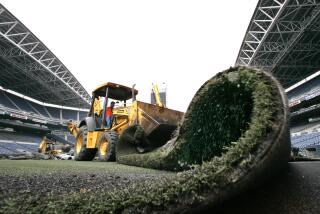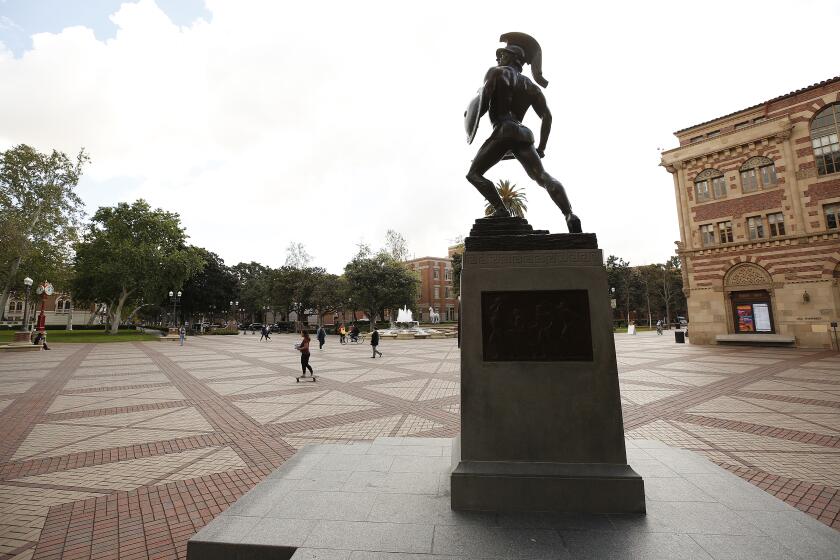Readers React: Fake grass is a fake drought solution
To the editor: Fake grass is bad for the drought because it does not allow absorption of rain into the aquifers. It does nothing to help cool temperatures surrounding the house. It is far from maintenance-free, because it collects the same amount of dirt and debris from trees that the yard has always collected. It isn’t even fun to play on unless you are wearing cleats. (“Glendale considers lifting ban on artificial turf,” May 17)
My new drought-tolerant landscape has brought more than 30 species of birds and butterflies to our less than half-acre property. We have witnessed the amazing metamorphoses of monarch and mourning cloak butterflies as well as the nesting and fledgling of baby birds all over our yard, something more valuable for children to experience than mere turf can provide.
The property has become much more interesting since we installed native plants and trees.
The city of Glendale should not allow so much of its precious habitat to be lost to ugly fake grass.
Kathy Harty, Sierra Madre
..
To the editor: There is an alternative to tearing up lush lawns that the article does not mention: keeping the lawn but cutting back on watering it.
The article notes that removing one square foot of grass in Southern California saves 42 gallons of water, the annual amount required to keep a lawn green and lush. However, the amount required to keep a lawn alive is only eight gallons per square foot if it is composed of drought-tolerant grasses like zoysia, Bermuda or St. Augustine.
Yes, the grass might turn brown after an extended period of so little water, but it will stay alive and green up quickly after a good rain.
John Ferguson, La Jolla
Follow the Opinion section on Twitter @latimesopinion and Facebook
More to Read
A cure for the common opinion
Get thought-provoking perspectives with our weekly newsletter.
You may occasionally receive promotional content from the Los Angeles Times.










